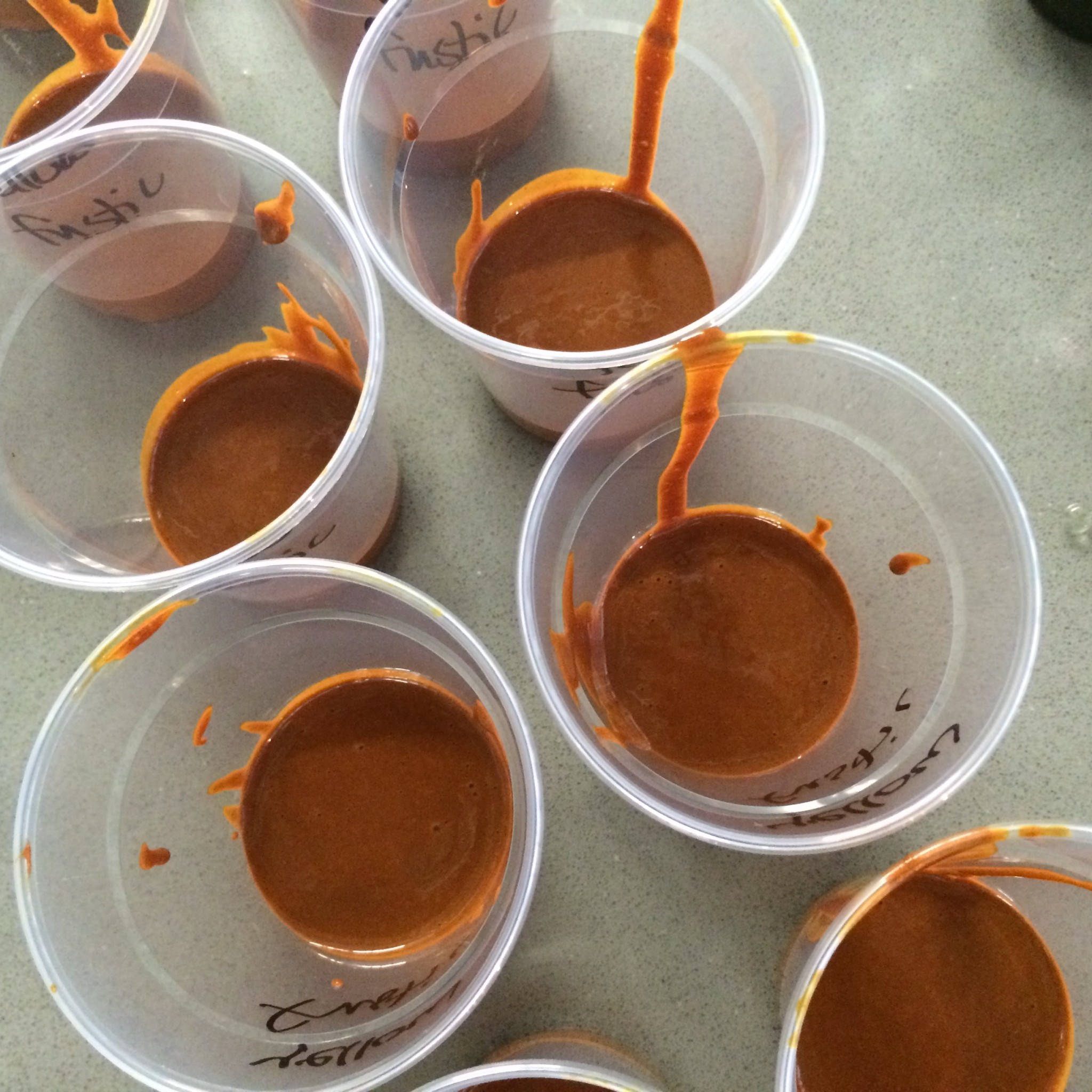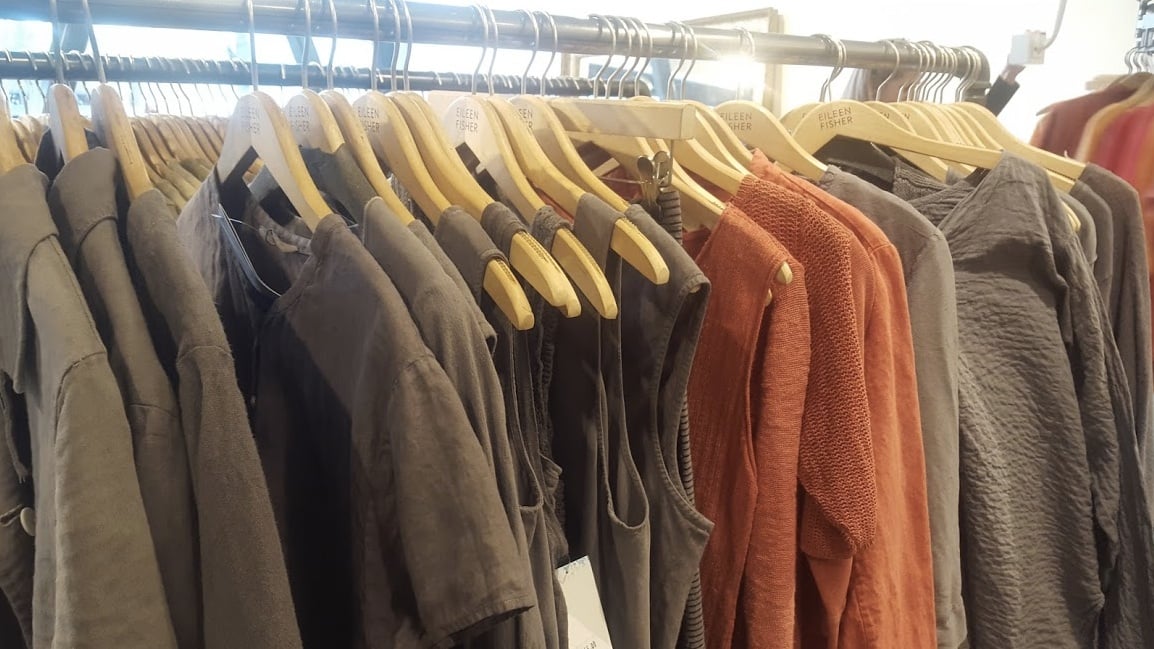
We’ve learned a lot over 12 years doing natural dye production for fashion brands so we’ve put together “5 Things About Natural Dye Production Vs. Synthetic .”
Sustainable design often means a concerted effort to really dig into the details of one’s supply chain but the number of variables to track can be truly overwhelming. One point that is often overlooked in the fashion industry is how fabrics are dyed and treated. In fact, for many designers, there is a fundamental disconnect when sourcing dyed and finished fabrics, even “organic” materials as the information on treatments and finishes are minimal and most designers have enough on their shoulders finding sustainably sourced and ethically-friendly fibers in the first place.
Check out our natural dye production for brands here.
So what’s a responsible designer to do? Ask yourself 5 basic questions:
1. How safe is that color?
One of the biggest hurdles in sourcing a truly sustainable fabric is that there is very little transparency as to what dyes and chemicals were used to color and print fabrics, even on organic cloth. Synthetic dyestuffs are complex combinations of nasty chemicals and only a few of the most toxic colorants are subject to regulation, which means that dyestuffs with unsafe ingredients are completely allowed and commonly used in conventional industrial dyeing.
Even if the dyestuff itself is benign, many synthetic dyes require additional chemicals and finishes that have dangerous properties. In 2013, Greenpeace purchased 82 articles of clothing and shoes for children and infants directly from authorized resellers and found levels of a wide range of hazardous chemicals in a number of brands, including Puma, H&M, Uniqlo, Burberry and other internationally known makers. All of the articles contained persistent chemicals that are suspected to be endocrine disruptors, toxic, or worse. This included children’s wear.
Are there safer and more sustainable options? Yes! In the synthetic dye world, you can look for suppliers whose products are GOTS and bluesign approved, and natural dyes that are mordanted (pretreated) with alum, never chrome, copper or tin. A responsible natural dyer should disclose their mordanting information for natural dye production with no hesitation.
2. How can I tell a different color story?
What is it that you can say about a petrochemical dyestuff? It used to be a fossil? Natural dye production can seem a million miles away if brands don’t know it exists. There is a growing trend to define a new color scheme using natural dyes. Indigo blue and madder red are easily recognizable shades in the natural dye palette, and sustainable companies like Danu Organic, Greg Lauren, and Harvest & Mill now use natural colors to show their commitment to sustainable production. Even mass market brands such as EILEEN FISHER have shown collections in natural dyes. It’s possible to showcase natural colors as part of your environmental commitment and tell a compelling story about sustainability and stewardship.
3. Water, water, water! How can I protect it?
Industrial textile wet processing (dyeing and finishing) consumes enormous amounts of water and environmental protection of water resources is now a reality. Ask manufacturers if they are lowering their water footprint through efficiency and recycling. Many dye facilities are proud of their efforts to reuse and reclaim water so seek out facilities that actively promote these environmental practices. Even custom and artisan dyers are acutely aware of water use and reuse.
4. What’s going down the drain?
Textile wastewater, or effluent, is one of the major water polluters in the world as many of the fabric finishing chemicals persist in water and are toxic to aquatic life as well as suspected as dangerous to humans. Not only are these chemicals being used to dye cloth, but when a consumer washes these fabrics in their home laundry, residues of these chemicals discharge into their laundry water and most municipal water treatment is not set up to treat these chemicals, furthering the pollution footprint. In the large textile centers located in Asia, the effluent of several massive factories are combined and sent to a wastewater treatment plant. However, the water is extremely difficult to treat as it is a combination of many chemicals from the factories, and in fact, the “treated” discharge is black colored water, indicating that the waste treatment facility is overwhelmed and not functioning. When choosing a fabric, ask if the manufacturer is proactively treating wastewater inside their facility. Many GOTS and bluesign certified manufacturers are tackling their wastewater through filtration and reverse osmosis systems. The waste from natural dyes may be composted, spread as fertilizer and dye water is easily treated for reuse or discharge.
5. Are there alternatives?
It’s critical to understand that no matter what fabric you source that there is most likely a more sustainable alternative out there but it takes work to find it. The good news is that the supply chain to dye and finish organic fabrics is growing in the US as part of the reshoring movement and the desire to create jobs in our communities. A number of manufacturers have robust sample programs and will accept smaller jobs which is a boon to emerging designers. So it is now possible to create a fabric from the seed to the showroom based on US-sourced organic fibers. U.S. dye houses are subject to local water use regulations, and it is becoming easier to find a supplier who can responsibly dye and finish your fabric with natural dyes or with non-toxic synthetic colors. Rather than being forced to choose fabrics whose provenance, production methods, and use of hazardous chemicals are unknown.


